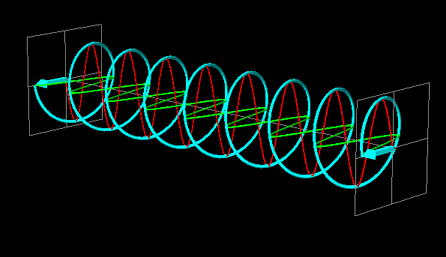What is Light?
Light is a type of electromagnetic wave that human eyes can see, known as visible light. Visible light consists of electromagnetic waves with wavelengths from 400 to 700 nanometers. When this portion of electromagnetic waves enters the eye, it stimulates the color-sensitive photoreceptor cells in the retina, called cone cells. Cone cells have different sensitivities to light of different wavelengths, producing signals of different colors and transmitting them to the brain. These visual signals compose the colorful world we see with our eyes.
Beyond the 400 to 700 nanometer electromagnetic waves, the discovery and application of electromagnetic waves can be said to have illuminated humanity's technology tree. For example, mobile phone communications and WiFi networks are based on slightly longer wavelength microwaves; the TV or air conditioner remote controls we use employ infrared rays; the microwave ovens we use daily also operate on electromagnetic wave principles.
The diagram below shows what electromagnetic waves look like, where red represents the electric field and green represents the magnetic field, both perpendicular to each other. The distance between any two adjacent wave peaks of the electric or magnetic field is the wavelength of the electromagnetic wave, which propagates at the speed of light, 299,792,458 m/s.

Light Sources
We know that atoms consist of a nucleus and orbiting electrons. When an atom receives energy, electrons jump from their current orbit to the next orbit, but after some time, electrons return to their original orbit. During the process of returning to the original orbit, photons are released. The diagram below illustrates this process.

Based on this physical phenomenon, we have created many light sources that can emit light, such as incandescent bulbs, LEDs, and even lasers. Let's talk about LEDs below.
LED (Light Emitting Diode) is a semiconductor device that can directly convert electrical energy into light energy, achieving luminous effects. Different semiconductor materials can emit light of different colors.
Compared to traditional light sources (such as incandescent and fluorescent lamps), LEDs have many advantages. First, LEDs have high efficiency characteristics, converting most electrical energy into visible light rather than heat, making them more energy-efficient than traditional light sources. Second, LEDs have long lifespans, typically lasting tens of thousands of hours, far exceeding traditional light sources. Additionally, LEDs have small size and dimensions, suitable for various compact spaces and application scenarios.
 Sensor Sparks
Sensor Sparks